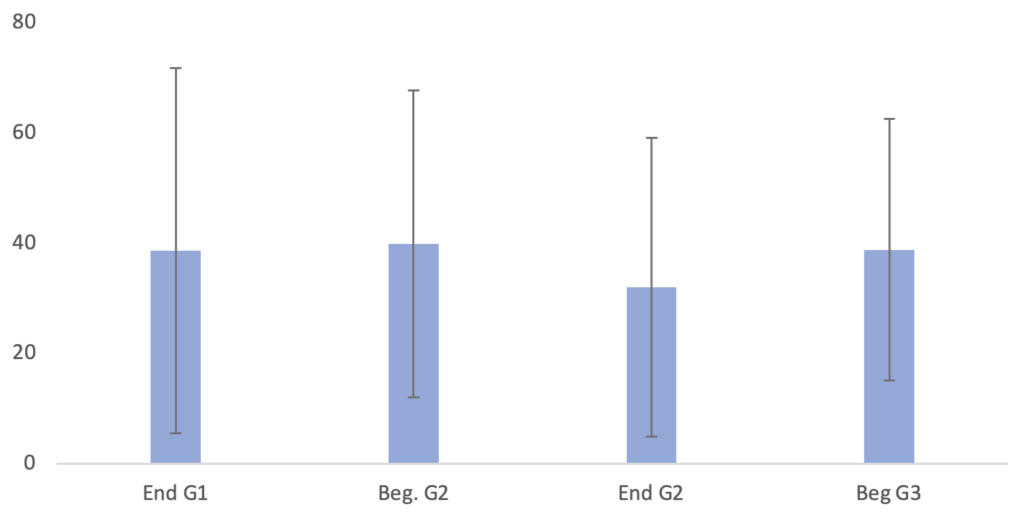
We all remember a favorite teacher from school, often a teacher who taught us to read and write and introduced us to the world of literacy. Literacy, after all, is part of the journey to knowledge in all subjects, and is crucial for our future health, political participation, and professional success. It is hardly surprising that we would remember with fondness those teachers who had the skill to give us a head start when our brains were most malleable, and we were most ready to learn.
Unfortunately, in Latin America two-thirds of children do not achieve the minimum levels of literacy for their age. That has made governments anxious to boost educational quality in the early years, not least by offering professional development to active teachers. The idea is to provide teachers with new pedagogical tools to improve children’s reading and writing skills.
Teacher Training in Manizales, Colombia
One such effort at teacher training is being made in the mid-sized city of Manizales, Colombia, where a program entitled “Let’s All Learn to Read” aims to increase reading fluency in first grade students. It gives teachers a “bundled” approach to professional development with various components like two weeks of in-person training, practical lessons, weekly in-class coaching visits and carefully structured lessons with guidelines to be implemented in class. The teaching method is based on a phonetic approach, and there are complementary pedagogical materials, including books for teachers and workbooks and storybooks for students.
Such a bundled approach to teacher training has been effective in increasing early literacy in various parts of Africa and, given the extreme importance of that mission for Latin America and the Caribbean, we wanted to see how effective it was in Manizales, where the program is easily scalable and might thus have wide application.
An IDB Evaluation on how to Improve Early Literacy
In a recent experiment, we evaluated the program in 70 public schools, 18 of which benefitted from the teacher training treatment and 52 which served as a control group. We found that the intervention was effective at improving students’ literacy skills by the end of the first grade, with students in treated schools improving in literacy proficiency by 38.6 learning points[1] compared to the scores of students in control schools (see Figure 1).
Moreover, the positive effects of the in-service development program persisted. Students who had teachers during the first grade that benefitted from the training program had literacy scores in the second and third grades that were 30-40 learning points higher than students in the control group. And that was true even when second and third grade teachers had not been part of the teacher development program, which was exclusively designed for first grade literacy.
Figure 1. Treatment Effects of the Intervention on Literacy Scores
(learning points = 100 x standard deviation of control group)

New Teaching Skills Reflected in Several Areas
We show that the programs’ effects were the same for students of different characteristics such as gender, socioeconomic status, and initial levels of literacy skill. The fact that students made similar learning gains regardless of initial reading level suggests that teachers were able to adapt their teaching strategies to the abilities of each of their students.This reflects an important feature of the program and its implementation.
In countries where many students are having difficulty acquiring basic literacy skills in early grades of schooling, finding effective methods to address this is a priority problem. Our experiment provides evidence that the program in Manizales, implemented with a very high level of fidelity and at a cost of US$36 per student, is cost-effective. It also provides evidence that similar in-service teacher development programs that provide teachers with new pedagogical tools designed to enhance literacy outcomes for first-grade children can be cost effective too.
The scaling-up of the program is already in motion. Currently, more than 700,000 public school students in Colombia and Panama are benefiting from it, and these numbers are expected to soon increase. Materials are being adapted for Portuguese in Brazil while Ecuador and the Dominican Republic have also shown interest in adopting the model. These recent developments in experimentation and subsequent adoption of the program suggest that the gap between evidence and policy can be reduced, and that children and the societies they inhabit can benefit in important ways.
[1] 100 learning points represent one standard deviation.


Leave a Reply